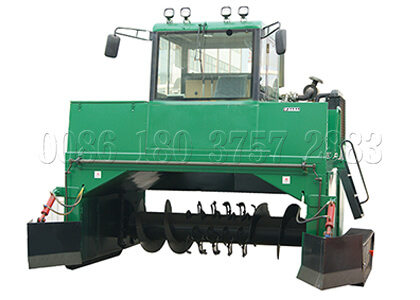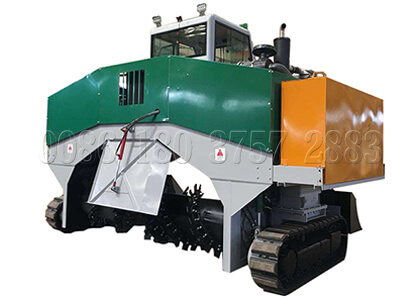The windrow composting system is a typical example of open site composting. It evolved from traditional composting. The typical feature is that the mixed raw materials are lined up and the stacking is periodically turned by mechanical composting equipment. Due to its flexible operation, it is suitable for a variety of raw materials and low operating costs, and it has been widely used. The composting process proposed by Mr. Aibert Howard of India in 1925 is essentially a composting system. He piled up garbage, manure, large manure, soil, straw or wood materials up to 1.5m high, and the stacking time was generally 120, 180 days. During the period, it was manually turned over several times. This process was improved by the Indian Agricultural Research Council. After being widely used, the VAM process proposed in 1931 is essentially an improvement of the Indore process, mainly used for stacking garbage.

What is the modern windrow composting system?
The modern windrow compost system is equipped with a larger site, more advanced equipment and greater processing capacity. It has been widely used to pile up a variety of organic waste strips including manure, sewage sludge, leaves and garden waste. The width and shape vary with the nature of the material and the type of equipment being turned over. The section of the strip can be trapezoidal, irregular quadrilateral or triangular. The common stack height is 1~3m and width is 28m. The length of the strip stack can be determined according to the amount of compost material and the actual position of the stack, generally 30~100m.

Oxygen, ventilation, and temperature control system
The oxygen in the compost is mainly supplied by natural ventilation caused by the rise of hot air in the strip or by forced ventilation, and the gas exchange during the stacking process can also be supplied to a small extent in the forced air strip system, oxygen is introduced with the help of forced or induced ventilation of the blower. In many composting literatures, whether forced or induced, the term “forced ventilation” is used. Strictly speaking, forced ventilation is suitable for the air in the environment. Forced into the raw material under the action of positive pressure; and induced ventilation is suitable for the air in the environment to come out of the raw material under the action of negative pressure. The general ventilation rate is determined by the porosity of the strip. It hte strip is too big, there will be an anaerobic zone near its center position. When the bar is turned, there is odor release; the bar is small, its heat dissipation is rapid, the stack temperature can not kill the pathogen and weed seeds, and the water evaporation is less.

Windrow composting machine
In either case, the windrows are periodically flipped to adjust their structure. The turning of the compost is mainly completed by the turner, and many special machines for turning over the pile have been developed at home and abroad. These machines save a lot of time and labor, allowing the raw materials to be completely mixed and the compost to be more uniform. In these devices, some of the machinery is towed by farm tractors, some of which have their own drive system, and some of which can be loaded on trucks or trucks next to the bar. The strip composting system can be used as a stand-alone system or in combination with other composting systems, such as Israel and Mexico, where the strip composting system is used in the post-treatment stage of other reactor composting systems.

.jpg)

